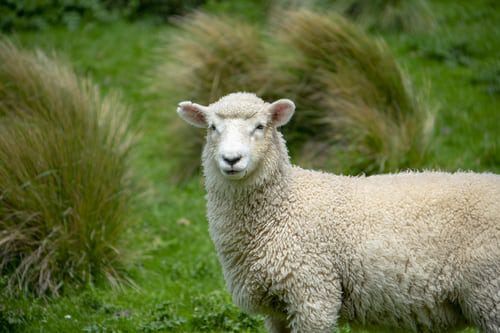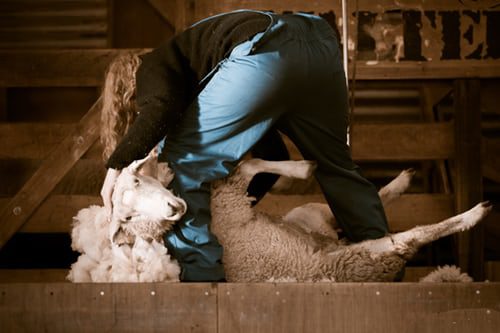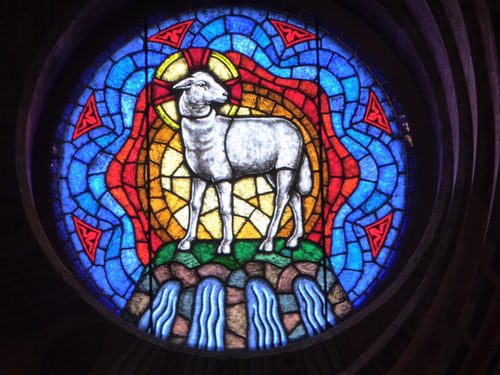
A Time for Shearing
Ecclesiastes denotes that there is a time for everything under heaven. However, it did not specify sheep shearing! With the arrival of spring, the shearing of sheep will begin. Timing is crucial for the sheep to avoid heat stroke and sunburns. Typically, adult sheep are shorn once yearly, although some breeds require twice yearly because of their faster-growing wool. Certain types of sheep and wild sheep naturally shed their coats – a process called rooing. But most sheep require an experienced shearer to remove their wool.
Shearing in Spring
Shearing before lambing has advantages for the sheep and the selling of its wool. Ideally, shearing should occur about a month before the ewe gives birth to its lamb. This allows for a cleaner birth. Lambs can also nurse easier. Shearing at this time provides adequate recovery from the stress of shearing, which is important in the quality of the wool produced. The quality is improved, thus increasing its value since the small breaks in the wool fiber that occur during birthing are avoided.

Another reason for shearing in early spring is that the ewes eat more grass, producing more body heat. The added nutrition is beneficial before giving birth.
The sheep are made to fast the day before shearing to reduce the amount of waste. This helps keep the shearing area as clean as possible. It also makes the sheep more comfortable when rolled onto its back during shearing.
Another factor before shearing is that the sheep must be dry. Wet wool could generate an electric shock from the use of electric cutters. Also, wet wool cannot be rolled.
Processing and Selling of the Wool
The process of shearing and selling is as follows:
- Herd the sheep into a pen.
- Using either blade shears or machine shears, remove the wool first from the sheep’s belly and then from the sides and back. The coat can often be removed in one large piece weighing ~8-10 pounds. Shearing takes about two to three minutes depending upon the size and condition of the sheep. Hundreds of sheep can be sheared in one day.
- Release the sheep into an exterior counting-out pen.
- Throw the fleece flesh-side down onto a wool table. This special table consists of spaced-out slats allowing debris and small pieces of wool to fall beneath.
- Skirt, roll, and class the fleece. Skirting involves removing undesirable parts of the fleece with a wool roller. The roller rids seeds, burrs, dust, feces, twigs, and leaves buried in the wool. After skirting the fleece, it is folded and rolled into a bundle.
- The bundle is placed into a wool bin where a qualified wool classer determines its type and quality. Each type is separated into designated bins.
- Press and store the wool until it is transported.
Why is shearing so important? The two main reasons are to collect the wool for retail purposes and, more importantly, to relieve the sheep of heavy wool causing overheating. Dirt and flies are also removed from the wool, preventing potential problems.
Shearing in the Bible
The act of shearing in the Bible has significant symbolism with the idea of renewal, harvest, and divine care. Like now, shearing was necessary in biblical times from an economic, social, and spiritual standpoint. Many biblical passages refer to the shearing of sheep or sheepshearers: Genesis 31 and 38, I Samuel 25, II Samuel 13, Deuteronomy 15, and Acts 8. Isaiah 53:7 says Jesus was “silent like a sheep before its shearers” when brought before His accusers.

Physical care is required to raise sheep and sell wool. The spiritual harvesting of blessings correlates with the relationship between the Good Shepherd and His people. The Good Shepherd tends His flock and allows for their renewing through shearing. In comparison, believers are nurtured and revitalized through their relationship with God.
Another perspective is the stripping away of excess through the act of shearing. Humility and obedience of the sheep and the shearer are required. Unnecessary burdens are removed, paving the way for spiritual growth and renewal.
Shearing sheep in the Bible often represents the idea of provision and abundance. Harvesting of wool can be looked upon as God’s provision. It can also symbolize stewardship in the sense that sheep should be sheared at the right time to ensure health and well-being. Again, this can be viewed as a spiritual metaphor for growth and renewal. We, as sinners, shed our old ways to embrace new beginnings.
I’m thinking I could use a little shearing this spring. What about you?
4 Comments
Leave a Comment
Follow This Blog
Ewe R Blessed Ministries / Karen O. Allen

This blog made me reflect on what needs to be sheared in my life.
We all have something we need to evaluate in our lives.
Grandfather Luellen was a farmer. Among his farm animals was a sizeable herd of sheep. Unlike others in the herd, Silas Sheep, a pet, was free to roam about on Grandfather’s expansive lawns … shorn or unshorn. And Silas did not like me!
He would often track me, sending this three-year-old screaming to the nearest adult. One day I was fishing at the edge of a tiny spring-fed rivulet that ran near the barn. Unbeknownst to me, but deviously plotted by Silas, he charged me and butted me into that stream. For weeks, I refused to play in the yard wihtout a cadre of supportive adults, and I have had an aversion to sheep ever since!
Thank you, Karen, for personalizing sheep for me decades later! And thanks be to Our Righteous God for the Lamb who has shorn me completely and eternally of my sin! [Even those bad thoughts about Silas!]
What a great story, Dr. Luellen. That’s funny that a sheep took a disliking to you as a youngster. I’m sure that did create a disdain for the wooly creature. I’m glad you can look at Silas in perhaps a different light. Thanks for sharing.